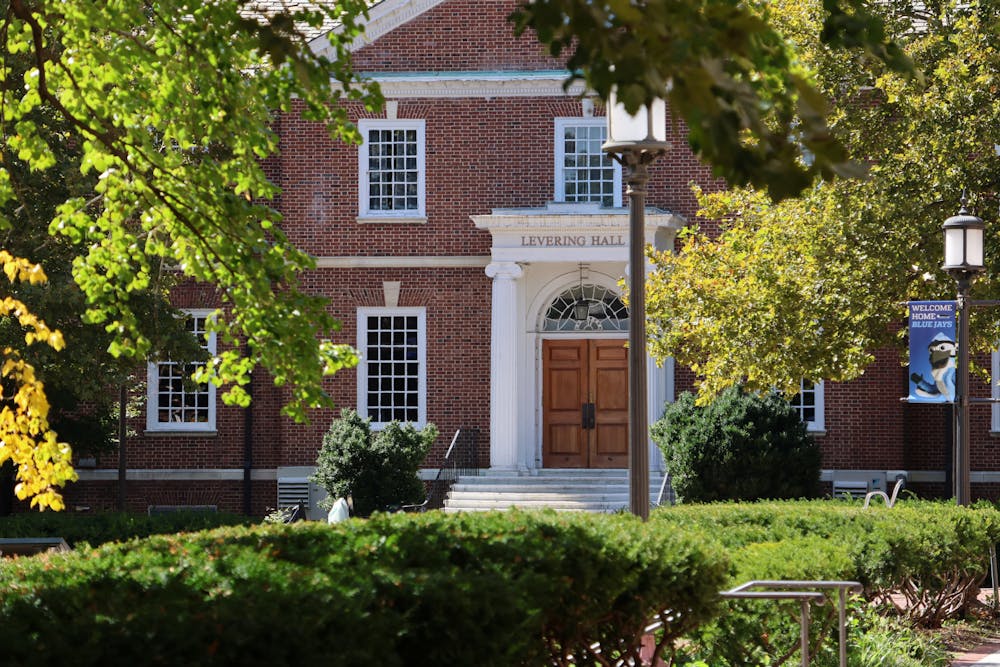According to the U.S. Department of Agriculture’s (USDA) 2021 report on household food security in the U.S., 13.5 million households are food insecure.
Bloomberg School of Public Health’s Center for a Livable Future conducted a study in 2018, which reported that one in four Baltimore residents live in areas that lack accessible options for healthy and affordable food.
Baltimore’s Healthy Food Priority Areas, an area where the distance to a supermarket is more than a quarter of a mile, are home to 23.5% of Baltimore residents, and these areas disproportionately affect Black residents. Healthy Food Priority Areas also refer to areas where the median household income is at or below 185% of the Federal Poverty Level, 30% of households have no vehicle available and the average Healthy Food Availability Index (HFAI) score for all food stores is low.
Many Black, Indigenous and people of color (BIPOC) face higher levels of food scarcity because of systemic racial injustice. According to the 2018 study, 31.5% of Black residents, 11.4% of Hispanic residents and 8.9% of white residents live in a Healthy Food Priority Area.
In an interview with The News-Letter, Joel Gittelsohn, professor at the Bloomberg School of Public Health, discussed where residents living in these areas acquire their food.
“If you go into a Healthy Food Priority Area, there may not be supermarkets in abundance, but there will be corner stores, carry-out results and fast food restaurants,” he said. “It’s a complex picture of different types of food sources.”
Gittelsohn’s work in Baltimore gave insight on how small retailers exist in food environments of their own. He explained that processed foods and sugary drinks have an easy time finding their way into corner stores because they are highly incentivized to distributors.
“If a corner store owner wants to get a variety of healthy produce, such as low-fat milk or whole wheat bread, they have to generally go out and get it themselves,” he said. “They do not have incentives like free display racks, reduced price so forth, and if they can get it delivered, it's often very expensive and requires high minimum quantities to purchase.”
In an interview with The News-Letter, Senior Director of Student Outreach and Support Elizabeth Winberry highlighted the importance of recognizing the disproportionate impacts of food scarcity on BIPOC residents in Baltimore cities.
“Large corporate grocery stores don't last in communities, and a lot of that has to do with the fact that if you live four miles from your nearest grocery store and you're working a 10-hour shift and [it takes] three buses to get there, that's not accessible,” she said.
Winberry stressed that understanding the lack of transportation as a barrier to accessible foods is crucial. She noted that recognizing the need for farmers’ markets and community gardens on transportation and bus lines could be an integral solution in bringing fresh food to community members.
According to Gittelsohn, the food insecurity crisis must be addressed through multi-level interventions. He maintained that at the city level, policies could potentially require all retail food stores to stock a broader array and depth of healthier foods.
At the federal level, the expansion of benefits of the Special Supplemental Nutrition Program for Women, Infants, and Children (WIC) and the enhanced promotion of WIC vendors would encourage store owners to sell a broader array of healthier food.
Like many major cities in the U.S., the COVID-19 pandemic exposed the long-standing structural inequalities of Baltimore City’s food system. Based on a report done by Feeding America, food insecurity in Baltimore City has risen from 18% to 21.7% as a result of COVID-19.
In 2020, the University launched the East Baltimore COVID-19 Food Access Initiative. The initiative worked as a partnership between Hopkins, Hungry Harvest, Saval Foodservice and 16 faith-based and community organizations to provide emergency food assistance and support families impacted by COVID-19.
Along with initiatives in the Baltimore community, the University has been working to provide resources for Hopkins affiliates. In 2022, the University reopened the Hopkins Food Pantry. The Food Pantry, in partnership with the Maryland Food Bank, provides accessible food items for Hopkins affiliates.
Winberry explained how a lot of undergraduate and international students are not eligible for Supplemental Nutrition Assistance Program benefits because of eligibility requirements, and students may struggle with unexpected emergencies and financial aid distribution that hinder their ability to get groceries.
She noted how the food pantry serves to be a supplement for students needing additional support.
“The whole idea behind the food pantry is that anybody could walk in there and create a meal, whether it's rice, pasta, a protein, beans, you know, quinoa, chicken and then some sort of vegetable or fruit,” she said. “We try to take into consideration religious and dietary restrictions so that anybody can walk in there and create a meal plan.”
According to Winberry, there are many preconceived notions that Hopkins students and affiliates do not struggle with food insecurity.
“Not everybody at Hopkins has access to a car to get to the grocery store,” she said. “Groceries at [CharMar] tend to be a little bit more expensive, getting down to Giant requires effort and time. Not everybody has that.”
In an email to The News-Letter, junior Public Health student Fiza Ali illustrated how Hopkins can do more for the Baltimore community to combat food insecurity.
“At Hopkins specifically, we generate so much food waste especially at the dining halls; dining options are ‘all you can eat’ style and some meal plans even allow for unlimited swipes,” she wrote. “It would be productive if these meal plan options were reorganized to be more sustainable and if groups similar to the Hopkins Food Pantry also addressed the issue of food insecurity beyond just campus affiliates, we can contribute to Baltimore as a community.”
The Hopkins Food Pantry is located on Homewood Campus inside The LaB. It is open on Mondays from 9 a.m. to 3 p.m. and Tuesdays from 3 p.m. to 8 p.m., and shelves are stocked with new items the first Friday of every month. Hopkins affiliates with an active JHED interested in accessing the food pantry must complete an application, and the shopper will have access to the pantry 2–3 days after the application is submitted. Shopper anonymity is respected. If you are interested in supporting the needs of other shoppers in collaboration with the food pantry, please contact studentoutreach@jhu.edu.





